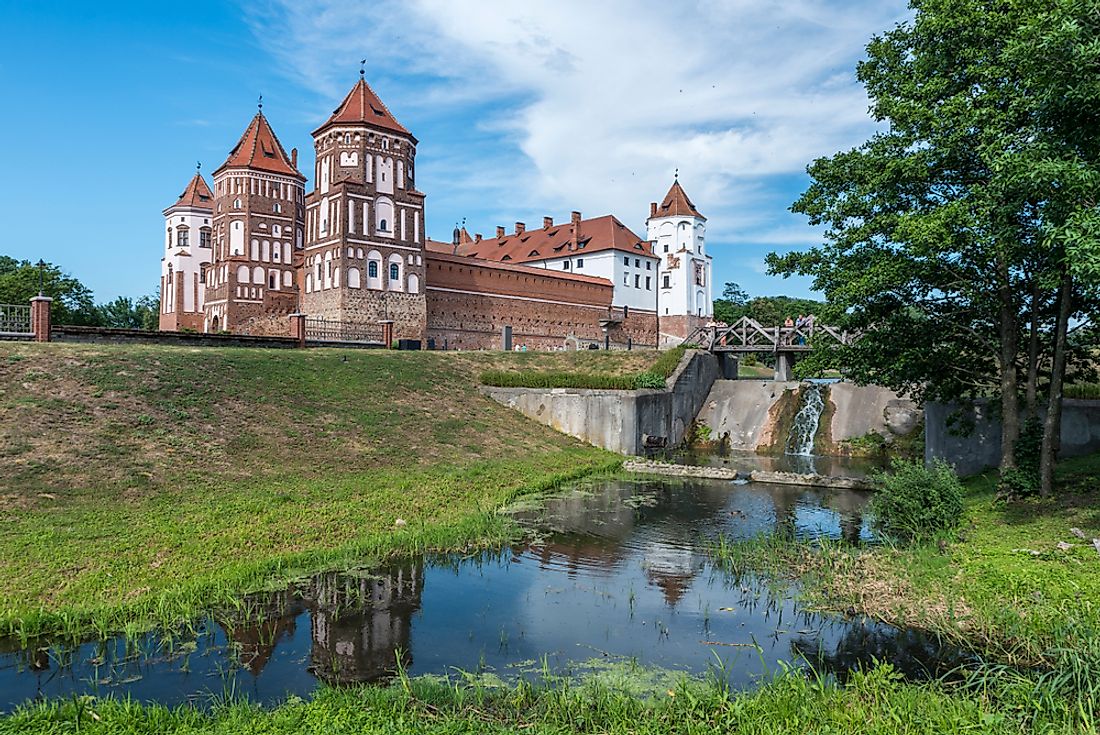UNESCO World Heritage Sites In Belarus

Belarus is a landlocked Eastern European country bordering Russia, Ukraine, Poland, Latvia, and Lithuania. The country has four sites that have been listed by UNESCO as World Heritage Sites; they are the Mir Castle Complex, the Struve Geodetic Arc which it shares with other nine countries, the Belovezhskaya which it shares with Poland, and Nesvizh Castle
Radziwill Family Complex At Nesvizh
This heritage site was listed was listed by UNESCO in 2005 as a cultural World Heritage Site. The Nesvizh complex has a rich history, and the construction of the original structure began in 1584. It has been rebuilt many times under different architectural influences. The Radziwill family took residence in the complex in 1533 and restored it to the architectural glory of the time. The Radziwill family was powerful and influential and was the patron of art between the 16th and 19th century.
The complex fell into neglect after the Radziwill family was driven out by the Red Army. The complex was however restored and is a cultural landmark in modern-day Belarus. A residential palace and the Corpus Christy Church make up the extensive complex. The palace is regarded as the most beautiful of its kind in Europe, along with its landscaped gardens and ornamental lakes. Thousands of tourists flock to this site annually. Protection of the site is overseen by the Department for the Protection of Historical and Cultural Heritage.
Mir Castle
Mir Castle in Grodno region was listed as a UNESCO World Heritage Site in 2000. The construction of the castle started in the 16th century, with Gothic architectural style. Subsequent construction was done in the Renaissance and Baroque architectural influences. The castle suffered extensive damage during the Napoleonic wars but was restored in late 19th century. The complex consists of a museum castle, burial vault used for the Svyatopolk-Mirsky Princes, and a church. The complex is surrounded by parks and a pond. Mir Castle is regarded as one of the most majestic castles in Europe. It is a major tourist attraction in modern day Belarus and received more than 300,000 tourists in 2015.
Struve Geodetic Arc
Struve Geodetic Arc was listed as a cultural heritage site in 2005 by UNESCO. The Arc is a network of triangulations stretching across ten countries, from Hammerfest in Norway to the Black Sea. The survey was facilitated by different scientists from different countries and was crucial in determining the size and shape of Earth. The points also made a crucial step in topography mapping. The survey was carried out from 1816 to 1855. Belarus has five points of these triangulations. The points have been preserved and are historical and technological landmarks in Belarus.
Bialowieza Forest
The Bialowieza forest was listed by UNESCO as a natural world heritage site in 1979. The forest is a large expanse of primeval forest along the border of Poland and Belarus. The forest is renowned for its unique biodiversity. The forest is mainly characterized by broad-leaved trees and conifers, and it is home to its iconic species, the European bison. The forest’s ecosystem is protected in the Bialowieza Forest National Park in Belarus. The forest has over 900 species of vascular plants, 59 mammal species, seven reptile species, over 200 bird species and 11 amphibian species. Activities in the park are highly regulated, and most parts of the park are left in their unaltered state. The Forest is a major tourist attraction in Belarus.
UNESCO World Heritage Sites In Belarus
| UNESCO World Heritage Sites in Belarus | Year of Inscription; Type |
|---|---|
| Radziwill Family Complex at Nesvizh | 2005; Cultural |
| Mir Castle | 2000; Cultural |
| Struve Geodetic Arc | 2005; Cultural |
| Bialowieza Forest | 1979; Natural |







